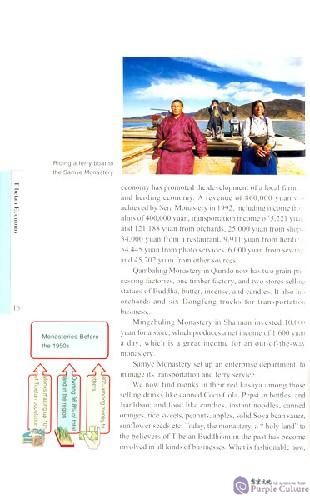The Tibetan economic mode has a long history in terms of farming, animal husbandry and a handicraft industry steeped in tradition. Farming in Tibet is divided into two parts: Highland and low-altitude farming. Qingke barley, wheat, peas, sweet potatoes, buck wheat and rape are the major crops of highland farming, being resistant to dry, cold conditions. Major crops in the areas at low-altitude include rice, maize, chicken feet cereals, and various kinds of vegetables.
Wandering around in pursuit of water and grass constitutes the basic form of traditional animal husbandry in Tibet.
